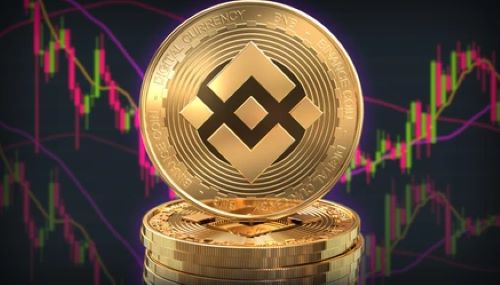

Introduction
Binance Coin (BNB) has emerged as a significant player in the cryptocurrency space, transcending its initial role as a utility token within the Binance exchange ecosystem. Born out of Binance’s vision to create a comprehensive blockchain ecosystem, BNB has grown to become one of the largest cryptocurrencies by market capitalization. This article delves into the rise of Binance Coin and its potential to disrupt traditional finance. So, if you are a newbie in the world of investing, tradeedgeai.com can help you by connecting you to one of many investment education firms out there so that you can learn more about investing.
The Rise of Binance Coin
Initially launched as an ERC-20 token on the Ethereum blockchain in 2017, Binance Coin was primarily used to pay for trading fees on the Binance exchange. However, its trajectory quickly evolved as Binance implemented various mechanisms to increase its utility. One key factor in BNB’s rise was the introduction of periodic token burns, where Binance buys back and destroys BNB tokens, reducing the circulating supply and potentially increasing its value.
BNB’s popularity soared during the 2017 cryptocurrency bull run, fueled by the rapid expansion of the Binance exchange and its growing user base. As Binance diversified its offerings to include various products and services, BNB’s use cases expanded beyond trading fee discounts. Today, BNB is used for token sales, staking, collateral for loans, and participation in decentralized finance (DeFi) protocols.
Utility and Use Cases
The utility of BNB within the Binance ecosystem is multi-faceted. Traders can use BNB to pay for trading fees, with discounts available for those who choose to pay using BNB. Additionally, BNB holders can participate in token sales hosted on the Binance Launchpad platform, giving them early access to promising blockchain projects.
Furthermore, BNB serves as the native currency of the Binance Smart Chain (BSC), a parallel blockchain that enables the creation of decentralized applications (dApps) and smart contracts. BSC’s compatibility with the Ethereum Virtual Machine (EVM) allows developers to port over existing Ethereum dApps with minimal modifications, offering a scalable and cost-effective alternative to the Ethereum network.
Binance Smart Chain (BSC)
Binance Smart Chain (BSC) was launched in September 2020 as a blockchain platform designed to support high-performance decentralized applications (dApps) and smart contracts. Built as a parallel chain to the Binance Chain, BSC combines high throughput with low transaction fees, making it an attractive option for developers and users alike.
One of the key features of BSC is its compatibility with the Ethereum Virtual Machine (EVM), allowing developers to easily migrate their Ethereum-based projects to the BSC ecosystem. This interoperability, coupled with BSC’s fast block times and low fees, has contributed to its rapid growth and adoption within the DeFi space.
BSC has become home to a thriving ecosystem of DeFi protocols, including decentralized exchanges (DEXs), lending platforms, and yield farming projects. PancakeSwap, a decentralized exchange built on BSC, has emerged as one of the largest DEXs by trading volume, rivaling established platforms like Uniswap on Ethereum.
Disrupting Traditional Finance
The rise of Binance Coin and the Binance Smart Chain has significant implications for traditional finance. By providing a decentralized and permissionless alternative to traditional financial services, BNB and BSC have the potential to disrupt various sectors within the finance industry.
One area where Binance Coin is challenging traditional finance is in the realm of payments. With its low transaction fees and fast transaction times, BNB can facilitate cross-border payments and remittances more efficiently than traditional banking systems. Moreover, the decentralized nature of BNB transactions ensures censorship resistance and financial sovereignty for users.
Additionally, Binance Smart Chain is democratizing access to financial services through decentralized applications (dApps) and DeFi protocols. Users can access lending, borrowing, and trading services without the need for intermediaries, leveling the playing field and empowering individuals globally.
Regulatory Challenges and Future Outlook
Despite its potential to disrupt traditional finance, Binance Coin and the Binance ecosystem face regulatory challenges in various jurisdictions. Regulators are scrutinizing the cryptocurrency industry more closely, raising concerns about investor protection, money laundering, and systemic risk.
Binance, as one of the largest cryptocurrency exchanges in the world, is actively engaging with regulators to ensure compliance with relevant laws and regulations. However, regulatory uncertainty remains a significant risk factor for BNB and the broader cryptocurrency market.
Looking ahead, the future outlook for Binance Coin is bullish, fueled by continued innovation and adoption within the Binance ecosystem. With the launch of new products and services, such as the Binance NFT marketplace and decentralized identity solutions, BNB is poised to further disrupt traditional finance and reshape the global economy.
Conclusion
In conclusion, Binance Coin has evolved from a utility token to a catalyst for innovation in the cryptocurrency space. Its integration with the Binance Smart Chain has unlocked new possibilities for decentralized finance, challenging traditional financial systems and institutions. While regulatory challenges remain, the disruptive potential of Binance Coin in reshaping the financial landscape cannot be ignored. As blockchain technology continues to mature, Binance Coin stands at the forefront of a new era of financial freedom and inclusion.


